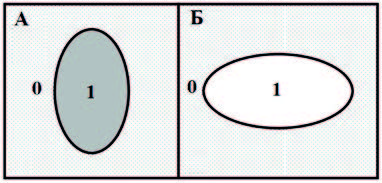INFORMATION SYSTEMS. COMPUTER SCIENCES. ISSUES OF INFORMATION SECURITY
MODERN RADIO ENGINEERING AND TELECOMMUNICATION SYSTEMS
MICRO- AND NANOELECTRONICS. CONDENSED MATTER PHYSICS
This paper considers various methods of effective media as a tool for studying both optical and magneto-optical properties of various nanostructures, primarily magnetic nanostructures. Formulas for finding diagonal and non-diagonal components of the permittivity tensor for all basic approximations of the effective medium were obtained explicitly. These formulas are valid for both nanocomposites and granular alloys. The possibility of predicting various optical and magneto-optical properties of such structures is discussed using the example of the transverse Kerr effect as a promising non-contact method for studying nanostructures for a ferromagnetic nanocomposite (CoFeZr)x(MgF2)100-x. A possible application of the obtained formulas is discussed. Various methods of effective media make it possible to study nanostructures in a wide range of values of the concentration of the metal (magnetic) component Х. The paper notes and discusses the contribution of various mechanisms that affect the physical properties of such structures, especially in the IR region of the spectrum, where the quasi-classical dimensional effect is most pronounced. The form factor of nanocomposite particles and the average particle size are such contributions that can be taken into account. The contribution of the quasi-classical dimensional effect to the diagonal and non-diagonal components of the structure's permittivity tensor is analyzed within the framework of the Drude-Lorentz model. The problem being solved in this work is relevant, since interesting and important effects are observed in magnetic nanostructures, such as the Kerr effect, anomalous absorption, giant magnetoresistance, tunnel magnetoresistance, and many others. These effects play an important role in modern electronic devices, which makes this work particularly relevant.
MATHEMATICAL MODELING
The article is devoted to the study of the seals of fixed joints. The mechanisms of leakage occurrence at different values of roughness and pressure on the joint surfaces are considered taking into account the real contact area. The estimation of deformations and forces in the contact zone was carried out taking into account the profile of surfaces, limit deviations of shape and location of surfaces, as well as physical and mechanical properties of materials of the sealed joint. The obtained theoretical dependence allows to evaluate the tightness of the fixed connection depending on the main parameters of the seal roughness, manufacturing errors and the location of the interfaces, their physical and mechanical properties and characteristics of sealed liquid, including differential pressure and the nominal pressure in the joint. A new law of probability density distribution is proposed, which more adequately describes the considered boundary conditions of the experiment. Relations for the probabilistic evaluation of the contact area and surface deformations taking into account the characteristics of the material are obtained. Simple engineering relations for the estimation of probability of contact of the projections and offset surfaces for the two profiles are obtained. The simulation of the process of leakage depending on these conditions is carried out. It is shown that the complete tightness of rigid joints is insufficient even with low roughness provided by the finishing methods of processing and in the absence of deviations in the shape of the joint surfaces. The comparison of experimental data with the obtained theoretical results showed that the proposed engineering dependences provide a good match with the experimental data.
The article discusses the optimization procedures in the marketing of educational services in the formation of a marketing strategy for a new recruitment in a university. A mathematical model for formalizing the objective function when evaluating the results of a new recruitment at a university is considered, which is the basis for creating optimization procedures. The results of the new recruitment are characterized by quantitative and qualitative indicators, which include the number of applicants, as well as the average USE score.
An economic and mathematical model is proposed for the optimal determination of the parameters of a new set, which provides a balanced policy for implementing a new set. At the same time, the importance of the minimum threshold of USE scores that an applicant must collect for admission to a university is shown. An increase in this parameter contributes to the fact that the average USE score of enrolled students increases, but at the same time the number of students enrolled in places with full cost recovery decreases. An optimization problem is considered, with the help of which it is possible to calculate the optimal value of this parameter.
A game-theoretic mathematical model is proposed for modeling the influence of marketing activities and random factors on the result of a new set, with the help of which it is possible to form a ranked list of activities and the optimal allocation of resources. Using the game-theoretic approach allows you to effectively take into account the uncertainties that affect the results of the new set. At the same time, a maximin approach is proposed, with the help of which we calculate the optimal strategy of marketing activities when organizing a new recruitment at a university. At the same time, a general scheme for using the optimization model is proposed and an algorithm is presented with the help of which we obtain a calculated optimal marketing strategy for implementing a new recruitment at a university and an optimal allocation of resources to ensure these activities.
ISSN 2500-316X (Online)

































